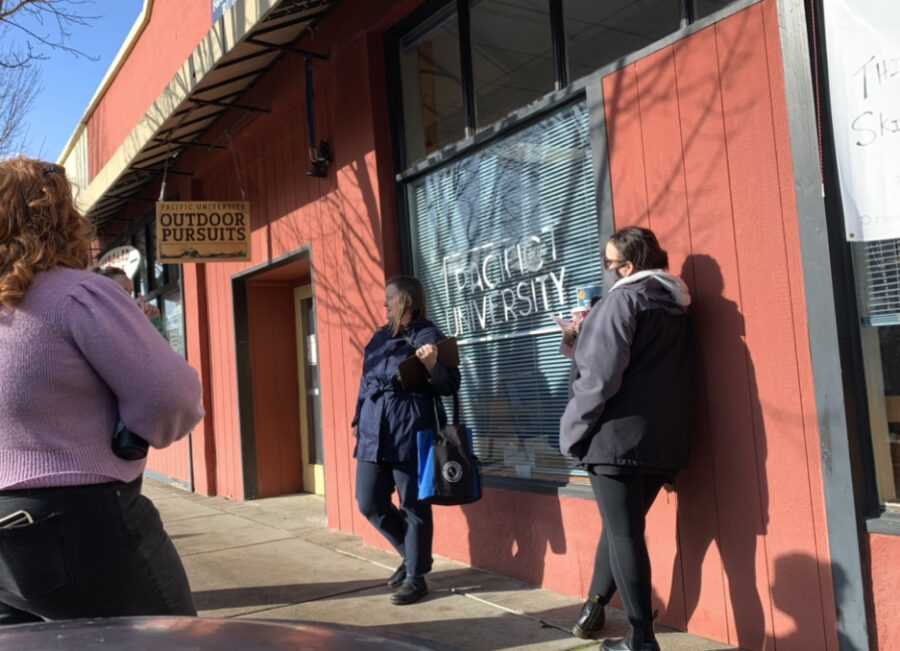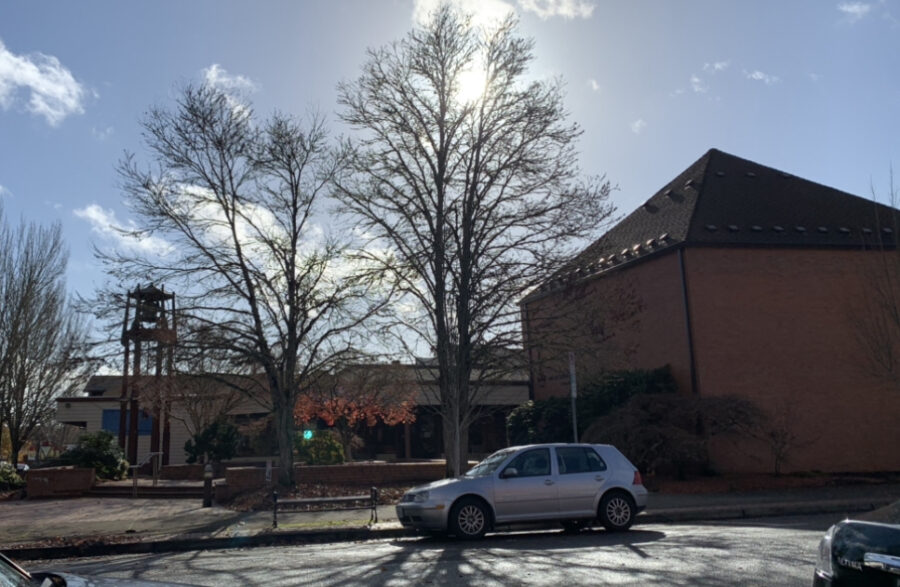The Pacific library hosted the Forest Grove Indian Memory School Walk on Nov. 5 and Nov. 9 to spread knowledge about the history of the Forest Grove Indian School.
Over the past ten years, Eva Guggemos, Pacific University Archivist and Associate Professor, and SuAnn Reddick, an independent Chemawa historian, have done an extensive amount of research uncovering the history of the Chemawa Indian School, formerly known as the Forest Grove Indian School.
The Chemawa Indian School, now located in northeast Salem, originally was built in 1880 in Forest Grove. Indigenous people were sent to this boarding school to receive a westernized education, where the schools effectively took away their Native culture to fit their ideas of how people should act, dress, and speak. Built in 1880, it was the second Indian Training School to be established in the United States and eleven students died from disease in the school’s custody before it was relocated to its current location. Some of these students were buried in the Forest Grove View Cemetery located on SW Pacific Ave.
Guggemos came to Pacific in 2013. She began doing research on the school when Shawna Hotch, a Pacific student who had graduated from Chemawa Indian School, inquired about the early history of the school when it was in Forest Grove.
In 2013, Guggemos, Hotch, and Reddick began with a list of names of the students who had attended the school. Guggemos and Reddick created a detailed spreadsheet where they documented the names of the students who attended, the years they were at the school, when and how they died, the Tribes they belonged to, where they were buried, and more. Guggemos and Reddick have worked together to find where the students are buried and have worked with the Tribes in the area in addressing what to do with the students who are still buried in Forest Grove.
“It’s not just something that happened over a hundred years ago in its long ago history, the legacy of it is still alive today in tribal communities,” said Guggemos.
Historically, Pacific was heavily involved in supporting the old training school, both financially and by supplying teachers. With such a close tie to Pacific, Martha Calus-McLain, Associate Vice President for Engagement and Operations, has worked to spread knowledge about the history of the Forest Grove Training School with members of the Pacific community. There is a stone in someone’s yard tying Pacific to the Training School. From this stone, people believed Pacific’s origins were intertwined with the founding of the school when in reality, the federal government founded it and Pacific simply supported the school.
“We need to examine each of these injustices in its own form in order to understand and work toward any sort of healing,” said Calus-McLain.
In Calus-McLain’s current position, when Guggemos began working at Pacific, she invited Guggemos to Pacific University’s Boxer Lecture Series (PUB) to speak about the history of the Forest Grove Indian School. In addition, she pushed for the university’s magazine to write a story at that PUB night. In this way, the history was able to reach the alumni population along with the rest of the Pacific community.
Dr. Mark Bailey, Director of the Child Learning and Development Center, is also working to spread awareness of the many tragedies inflicted on Indigenous people with university students and in the Early Learning Community (ELC). In his courses for undergraduate and graduate students, he stresses the importance of studying the place you are living in. Through a process called “place based education”, Dr. Bailey is looking to teach the children about the history of the Forest Grove Indian School, as it is part of the history of Forest Grove.
“In many schools they want to study [other places across the world] but they forget to study their own backyard. Place based education is this idea of starting a study of who we are and our relationship to the world.” said Dr. Bailey. “[Once] we come to develop a deep understanding and respect for the place we are in, then it allows children to develop a sense of ecological literacy. Understanding is then developed into a love for a place that one lives.”
Teaching people about the history of the Indian Training School is the most important thing we can do, according to Guggemos, Calus-McLain, and Dr. Bailey. Through events such as the Forest Grove Indian Memory School Walk, they look to make the history of the school and their ties to Pacific known as well as acknowledging the students who died attending it.
“[As allies] one of the top things that we can do is tell the truth about what happened,” said Guggemos, “say the facts of how Pacific was involved, what Pacific did that supported this school, how many children went there, where they came from, and where the school was should be something that is known broadly.” — Allison Wills




Leave a Reply